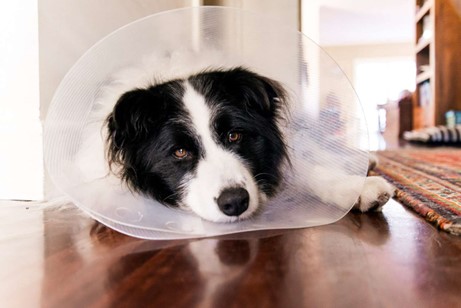Medical Devices for Animals: A Look Beyond the Cone
The cone of shame, or more formally known as the Elizabethan collar, is probably the device that comes to mind when most people think of medical devices for animals. A plastic sheet that is wrapped around the collar of small pets, usually dogs or cats, prevents them from scratching any wounds or surgical incisions above their necks. Beyond the cone, there is a vast world of emerging medical devices for animals with new breakthrough products changing the landscape of animal healthcare.
Medical devices for animals are not regulated in the same manner as those for humans. There are no ISO13485 adherence requirements, and companies do not have to submit a 510k as animal devices do not receive FDA certification. Nevertheless, they are medical devices. This article explores a small snapshot of veterinary and consumer emerging medical devices for animals.
Veterinary Devices
The most active area for innovation in medical devices for animals is in veterinary use. New technologies and approaches to animal-centered medical device development have facilitated applications for a wide range of animals and their healthcare needs.
Approachable industrial design revamps dated animal medical products to make them easier for both human caregivers and animals. Rethinking the form and functionality of older widely used products involves redesigning them for current manufacturing methods, color, material, & finishes (CMF), holistic assessments, use cycles, and putting forth the same effort as designing medical devices for humans.
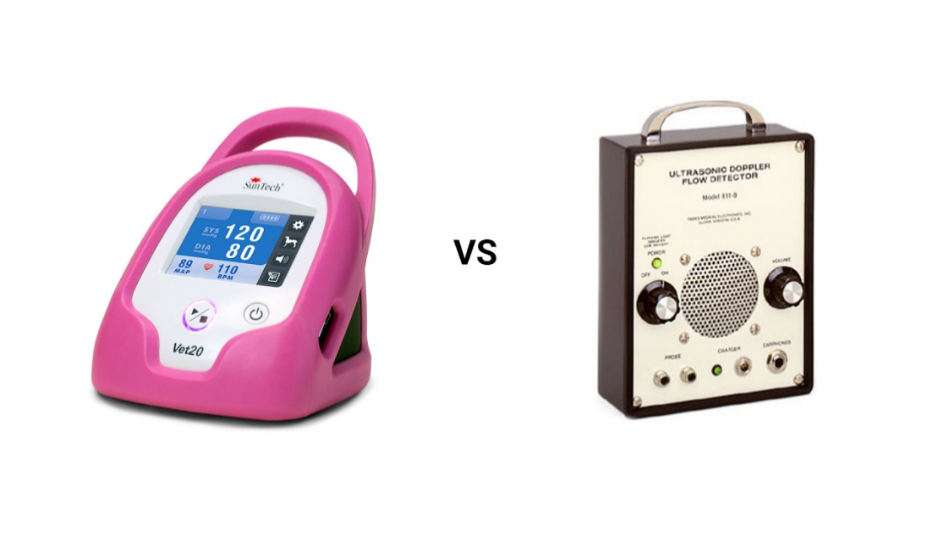
In Figure 1, both products serve the same purpose as a blood pressure monitor, the only difference is they are 30 years apart. It’s likely that the more inviting device on the left is both most likely to be used and feels less intimidating. The brown and boxy 811-B ultrasonic doppler flow monitor (right) was popular during its time and has key functionalities still used today. The purpose-made pink Vet20 (left) is friendlier, more ergonomic for vets and looks less intimidating when used in front of pet owners.
Industrial design trends of consumer electronics have been trickling down into medical devices for humans and now for their animals. Although most animals don’t know or care about the design differences, these new iterations have eased the workflow of vets while indirectly reducing anxiety of pet owners when they visit vets and do not see large monotone volumes of medical equipment.
Point-of-care healthcare using portable devices is reducing the stress of animals and providing more accurate data. A common theme of new medical devices that directly benefit animals is point-of-care healthcare. It reduces distress on animals traveling to vet clinics or distant testing sites. Many animals experience anxiety when going to the vet for routine checkups or vaccinations. This anxiety is exaggerated when they are ill, which may lead to differences in both quantitative and qualitative assessments.
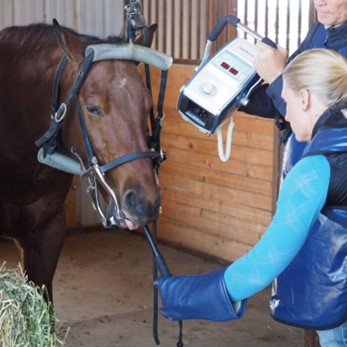
Portable radiography is addressing the uptick in demand for veterinary house and farm calls. The Cuattro Hub by Sound Technologies is an all-in-one ultrasound, bone & dental radiograph, and digital endoscope for equine use. By eliminating the need for multiple stationary equipment, veterinarians can travel to the stable of horses and take assessments minimally disrupting the horse. Ergonomic design considerations such as the right location and size of handles, sensors and displays allow for numerous scanning positions around and inside the horse’s body.
New design processes and manufacturing methods unlock treatment opportunities that were once not possible. Custom made devices for animals can be expensive and hard to make as there are many more variations in animal physiology compared to humans. Additive manufacturing methods like 3D printing combined with 3D scanning, can make devices for animals relatively fast & cheap. Most importantly, they can be anatomically fitted on a diverse range of animals.
Bionic Pets makes prosthetics not only for popular dog breeds like many other companies, but for a wide variety of animals such as sheep, cows, and guinea pigs to name a few. Through a combination of traditional and emerging manufacturing methods, adaptive devices for animals are not limited to limb prosthesis, but also ergonomically fit braces and wheeled carts for more severe injuries.
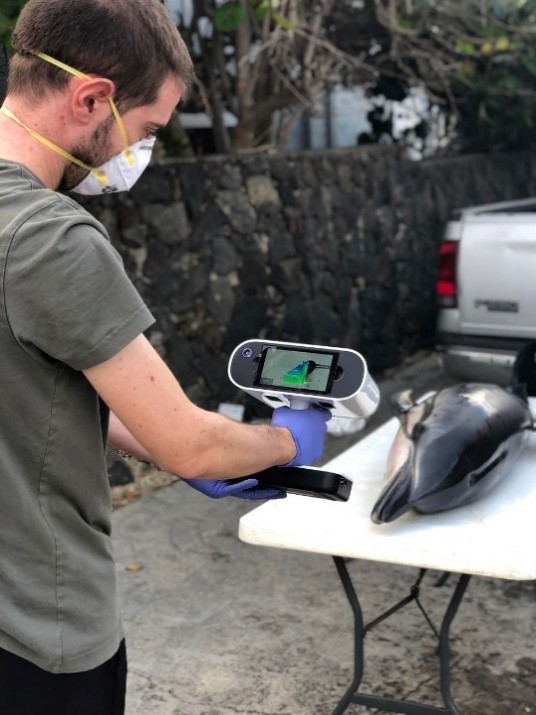
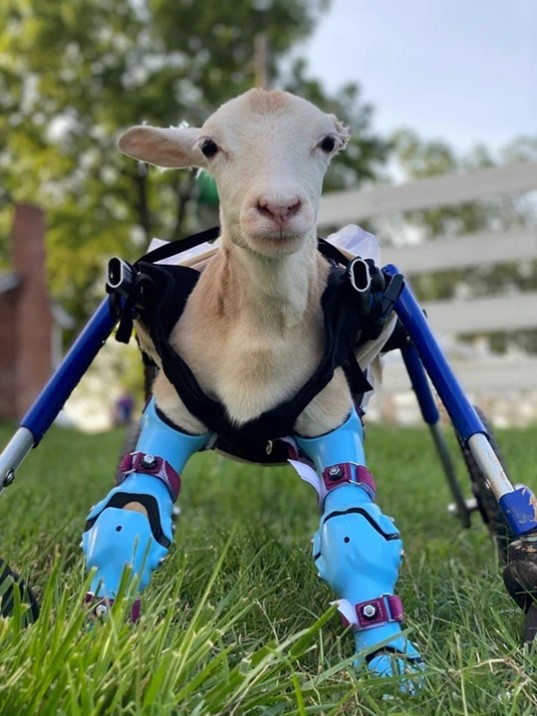
Consumer Medical Devices for Animals
The rise in preventative healthcare is not just for humans, but also their pets. These new innovations reflect that trend. They are typically off-the-shelf products that animal owners will interact with.
Livestock management using wearables are integral to track the ‘farm to fork (or glass)’ journey for safe, efficient and sustainable food production. As consumers are being more conscious about the welfare of the animals that play a role in their diet, farmers are leveraging Internet of Things (IoT) devices to track the health of their animals. Dairy farmers are using trackers on their cows to monitor their health and productivity through interpreting their resting, movement, feeding and rumination data which can also foresee potential diseases and illnesses.
The MooMonitor+ is a popular IoT device dairy farmers use for aiding in their daily workflow. A collar with a gyroscope, accelerometer, and temperature sensor around the neck of the cow provides insight into all the necessary health metrics for farmers to know the physical activities of the cow along with their estrus cycle (days of fertility). Onboard NFC on the collar is used to identify each cow and their metrics.
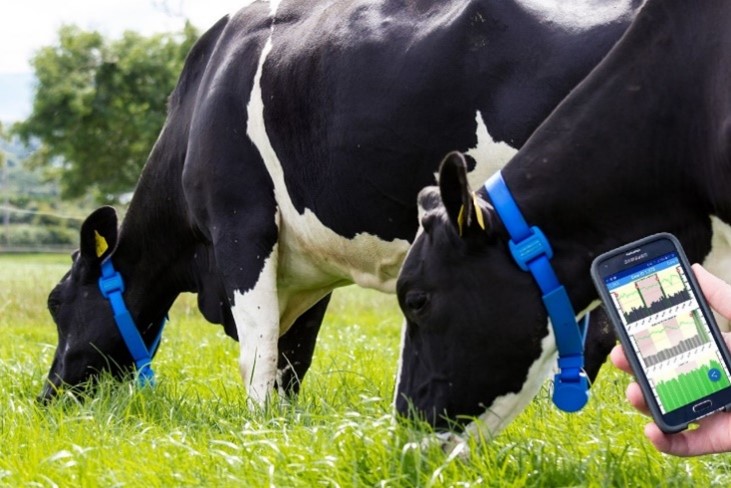
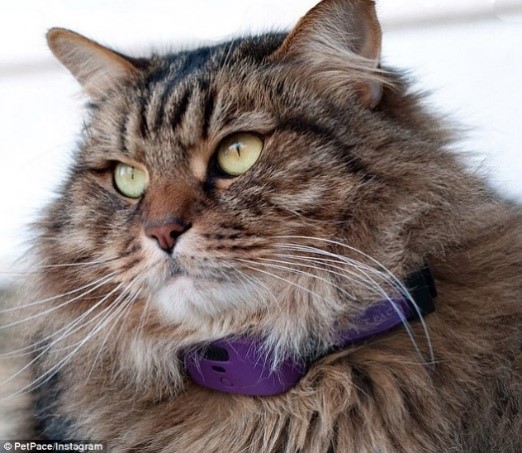
Smart pet collars are the most common preventative healthcare devices. With smaller biosensors and integration of AI predictions on collected quantitative data, owners can know not only location and physical activities of their pets, but in-depth biometrics such as vitals and emotional state.
PetPace smart collars for dogs and cats create real-time analytics using onboard thermometers, acoustic sensors, 6-D accelerometers and GPS to graph out thousands of biometric data points daily. Owners can see an overview of their pet’s health without visiting a vet.
UX adjustments were made because pet owners viewing in-depth data are likely not trained as vets and there could be data misinterpretation leading to misdiagnosis. Colored visual markers indicating normal values aid pet owners in understanding what their pet’s data means.
At-home testing and diagnostics let pet owners conduct and interpret tests without veterinary input. Urine analysis is an easy way to test many ailments of pets at home. Although more detailed analysis can be done at vet clinics, the travel and cost can make such testing difficult.
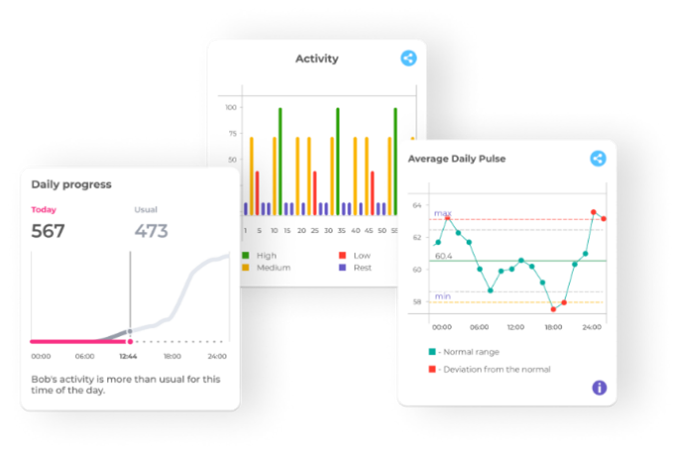
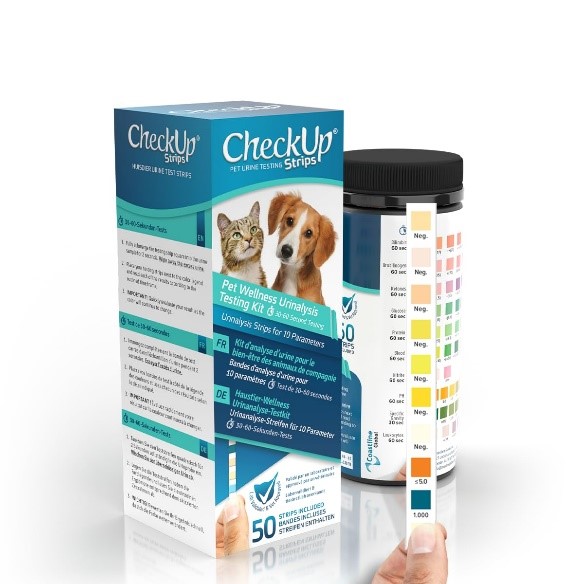
A good compromise that incudes testing at home is a portable urine testing kit. One example is made by CheckUp. After urine is collected in the dish, dripping samples on the testing strip using an included vial reveals if there are any issues with the animal, and can be later taken to the vet if serious.
E-textiles pave new paths for wearables for animals. A rising application is specially treated blankets to non-invasively monitor the entire body of larger animals. This is done by wiring nanoparticles onto fabrics at sub-millimeter resolution using a programmable dual-regime spray. The fabric is still flexible, water permeable and feels the same, but now with sensors to record electrophysiological signals [2].
A new blanket for horses being developed by Purdue University can monitor cardiac, respiratory and muscular systems. The ergonomically fitted blanket minimally impedes horse activities so data collection during everyday activities is more accurate. This helps casual horse owners, breeders, racers and vets uncover vital insight without the use of expensive equipment in specialized labs.
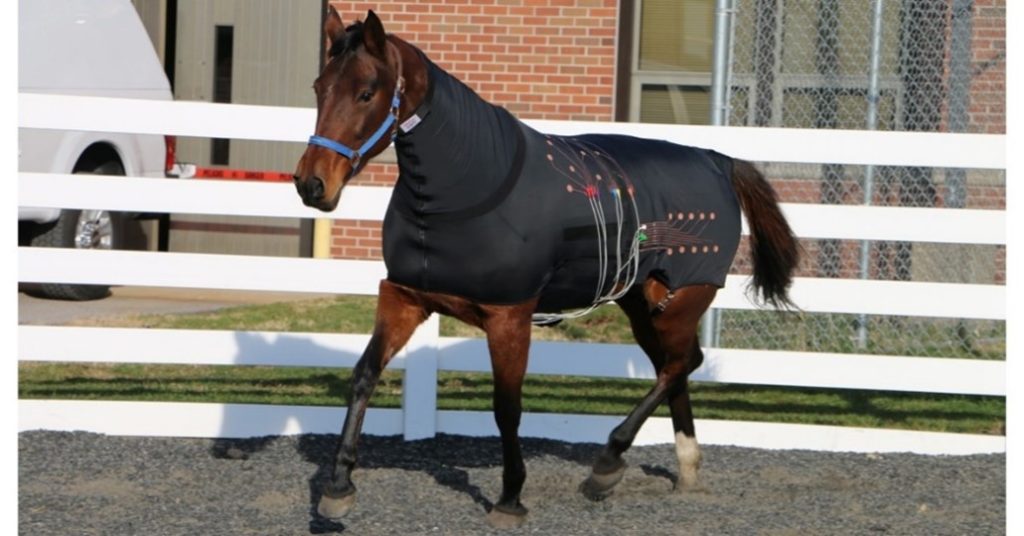
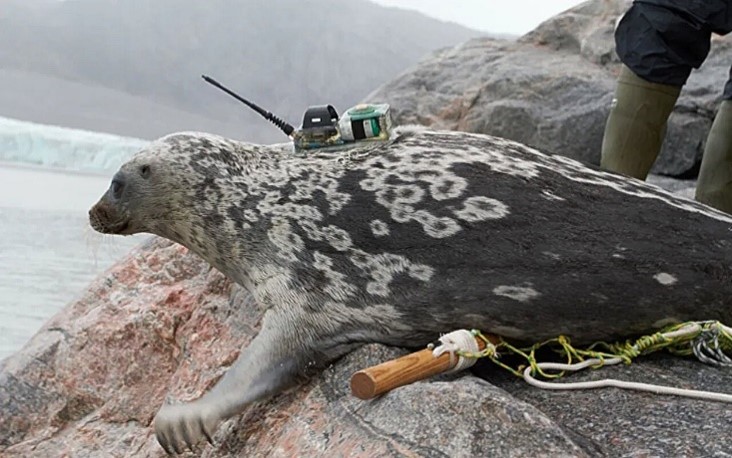
Animal-borne telemetry used for wildlife analysis & conservation efforts contributes to animal welfare. Small to miniature-sized sensors attached to the surface of animals monitor their location, limb movements, feeding rate, blood chemistry, body vitals and the environments they are in. These biologgers have transformed our understanding of certain species’ physiology, ecology and behavior.
Marine telemetry has become more prominent to track aquatic wildlife, traditionally a very challenging area as data capture under water involves many more complications than data capture on land or in the air.
In one initiative, researchers from the University of Helsinki attached biologgers on ringed seals in West Greenland to track their population and movements. Their findings on declining Arctic biodiversity encouraged using more telemetry devices to uncover wildlife data that was previously unavailable [1].
Design and engineering of biologgers have biocompatibility considerations for materials and components that are congruous with the skin, fur, scales, or shells of animals. Devices also must withstand the environmental conditions of the animal habitat(s). For example, the ringed seals electronics must function as intended under 150ft of water.
Devices should not hinder the daily lifestyle of the animal. Anything not native to the animal being tracked may pose threats as potential predators or prey may act differently, which may interfere with the natural ecology of the animal and its surroundings.
Conclusion: An Integrated Future
The last 20 years saw an exponential growth in not just new animal-centric medical devices but widespread adoption rates by their caregivers and respective industries. The future of emerging medical devices for animals has great potential, from easing the anxiety of animals during treatments, more detailed look at animal biometrics by their caregivers, to learning more about wildlife activity which in turn aids in animal welfare. There is an opportunistic future ahead for animal medical devices.
Devang Ghosh is an Industrial Design Intern at StarFish Medical who currently attends Carleton University’s School of Industrial Design. Devang won a few awards for his student design projects and is interested in integrating research and iterative prototyping to holistically solve design problems.
Main Image: DailyPaws
